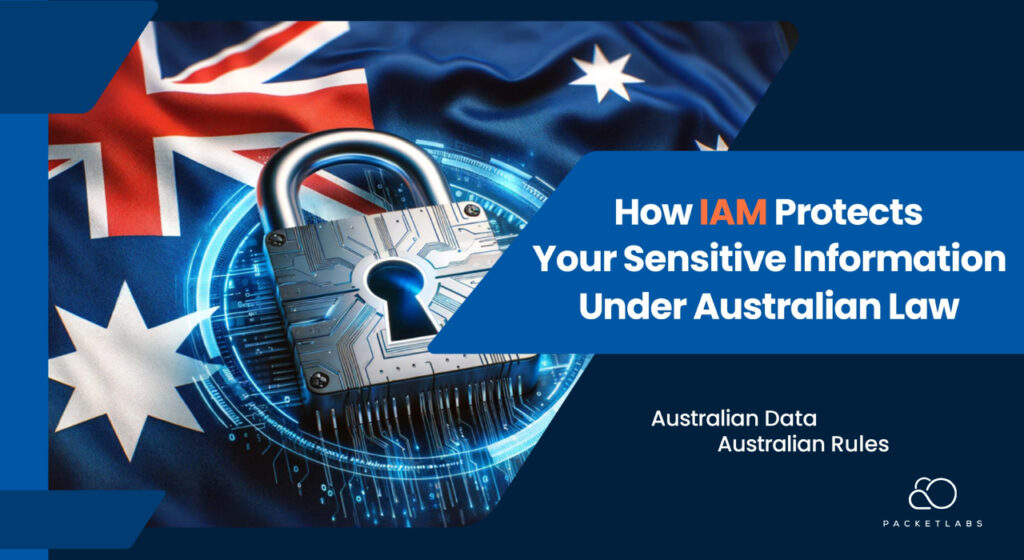
In today’s digital landscape, information reigns supreme. From online banking details to personal health records, the data we entrust to organisations, both large and small, forms a crucial part of our modern lives. This data, often referred to as “Aussie Data”, underpins countless interactions and transactions, shaping our experiences as individuals and as a nation.
However, with this growing reliance on data comes a heightened responsibility and concern for its security. Recent headlines have unfortunately painted a picture of increasing data breaches, exposing sensitive information and raising serious questions about how well our data is being protected.
Fortunately, there are solutions available to mitigate these risks and bolster data security. Identity and Access Management (IAM) emerges as a critical tool in this fight. By implementing robust IAM frameworks, organisations can establish clear control over who accesses and interacts with their data, significantly reducing the likelihood of unauthorised access and potential breaches. This article delves into the importance of data privacy in Australia, explores the legal landscape surrounding data security, and ultimately showcases how IAM empowers organisations to safeguard “Aussie Data” in the digital age.
Protecting Personal Information under Australian Law
Australia’s commitment to data privacy is enshrined within the Privacy Act 1988 (Cth), which establishes a robust framework for safeguarding personal information. This framework revolves around the Australian Privacy Principles (APPs), a set of 13 principles outlining clear obligations for organisations handling personal information.
Among these principles, several hold particular relevance in today’s discussion:
- APP 1: Open and transparent management of personal information: This principle mandates that organisations be transparent about their data collection, use, and disclosure practices, keeping individuals informed through readily accessible privacy policies.
- APP 10: Quality of personal information: Organisations are required to take reasonable steps to ensure the accuracy, completeness, and relevancy of the personal information they hold. Individuals also have the right to request correction of inaccurate information.
- APP 11: Security of personal information: This principle underscores the critical responsibility of organisations to take appropriate security safeguards against unauthorised access, disclosure, loss, or misuse of personal information.
Furthermore, the Notifiable Data Breaches (NDB) scheme introduced in 2018 mandates that organisations holding specific types of personal information notify individuals and the OAIC (Office of the Australian Information Commissioner if a data breach occurs that could potentially lead to significant harm. This regulation further emphasizes the importance of data security and imposes additional reporting obligations on organisations in the unfortunate event of a breach.
Ignoring these legal obligations can have significant consequences. Non-compliance with the Privacy Act can lead to hefty fines, reputational damage, and even civil lawsuits. Additionally, failing to notify the OAIC of a data breach under the NDB scheme can attract substantial penalties.
Therefore, understanding and adhering to these legal frameworks is paramount for organisations operating within Australia, not only to protect the privacy of individuals but also to safeguard their own operations from potential legal and reputational repercussions.
The Power of IAM: Protecting Your Data Fortress
In today’s digital world, where data is constantly flowing and accessed through various devices and applications, Identity and Access Management (IAM) emerges as a crucial line of defence in safeguarding sensitive information.

At its core, IAM is a strategic approach to managing user identities and access privileges within an organisation’s digital ecosystem. It ensures that only authorised individuals can access specific data and resources, minimising the risk of unauthorised access and potential breaches.
IAM relies on three key components to achieve this objective:
- User Authentication: This process verifies the user’s claimed identity, typically through a combination of username and password, multi-factor authentication (MFA), or biometric verification.
- Authorization: Once authenticated, IAM determines what level of access a user has to specific resources. This involves defining user roles and assigning appropriate permissions, ensuring individuals can only access the data and functionalities necessary for their specific job role.
- Access Control: This component enforces the defined access permissions, preventing unauthorised users from accessing restricted data or performing unauthorised actions. Access control methods can include firewalls, data encryption, and user activity monitoring.
By implementing robust IAM frameworks, organisations can leverage these key components to safeguard sensitive information in several significant ways:
- Controlling Access:
IAM allows for granular control over data access by defining user roles and assigning specific permissions to each role. This ensures that only individuals with a legitimate need to access certain data are granted access, significantly reducing the risk of sensitive information falling into the wrong hands.
- Enhancing Accountability:
IAM systems track user activity, logging access attempts, data modifications, and other relevant actions. This detailed audit trail provides valuable insights into user behaviour and facilitates the identification of potential security breaches or suspicious activities.
- Improving Data Integrity:
By restricting unauthorized access and modifications, IAM helps maintain the integrity of data. This ensures that only authorized users can modify data, and any unauthorized attempts to alter data are readily identified and addressed.
In essence, IAM acts as a digital gatekeeper, meticulously guarding access to sensitive information and bolstering an organisation’s overall data security posture. By embracing IAM solutions and implementing effective control measures, organisations can significantly reduce the risk of data breaches, maintain regulatory compliance, and build trust with individuals who entrust them with their personal information.
Packetlabs: Your Trusted Partner in IAM Compliance
Navigating the complexities of data security and achieving compliance with Australian privacy laws can be a daunting task for organisations of all sizes. This is where Packetlabs steps in as your trusted partner, offering comprehensive expertise in Identity and Access Management (IAM) solutions.
Packetlabs boasts a team of highly skilled professionals with extensive experience in designing, implementing, and managing robust IAM frameworks. Their approach leverages industry best practices and aligns seamlessly with the Australian Privacy Principles (APPs) outlined in the Privacy Act 1988 (Cth). This ensures your organisation not only benefits from enhanced data security but also remains compliant with relevant legal requirements.
Packetlabs recognises the importance of proactive security measures. They offer comprehensive security assessments that delve deep into your IT infrastructure, identifying potential vulnerabilities and recommending appropriate mitigation strategies. This proactive approach helps you stay ahead of potential threats and safeguard your sensitive data.
Furthermore, Packetlabs understands the dynamic nature of the regulatory landscape. They are committed to providing ongoing support and guidance to their clients. This includes regular updates on evolving regulations and industry best practices, ensuring your IAM strategy remains effective and compliant in the ever-changing digital environment.
By partnering with Packetlabs, you can leverage their expertise to:
- Design and implement secure IAM frameworks aligned with Australian privacy laws.
- Identify and address potential vulnerabilities through comprehensive security assessments.
- Stay informed and compliant with evolving regulations through ongoing support and guidance.
Packetlabs empowers organisations to take control of their data security and build trust with individuals by ensuring their “Aussie Data” is effectively protected.
Safeguarding Aussie Data in a Digital Age

In today’s digital landscape, data privacy remains paramount. As individuals entrust organisations with an ever-growing volume of sensitive information, the responsibility to safeguard this data becomes increasingly crucial. Fortunately, solutions like Identity and Access Management (IAM) empower organisations to take control of their data security posture.
By implementing robust IAM frameworks, organisations can establish clear access controls, enhance accountability, and safeguard data integrity, significantly reducing the risk of data breaches and fostering trust with individuals.
Navigating the complexities of data security and achieving compliance with Australian privacy laws can be challenging. Partnering with IAM experts like Packetlabs can provide invaluable support in this endeavor. Their expertise in designing, implementing, and managing effective IAM solutions can empower your organisation to safeguard your “Aussie Data” and operate with confidence in the digital age.
Related Resources:
- Office of the Australian Information Commissioner (OAIC): https://www.oaic.gov.au/
- Australian Privacy Principles (APPs): https://www.oaic.gov.au/
- Notifiable Data Breaches (NDB) scheme: https://www.oaic.gov.au/privacy/notifiable-data-breaches/about-the-notifiable-data-breaches-scheme
